
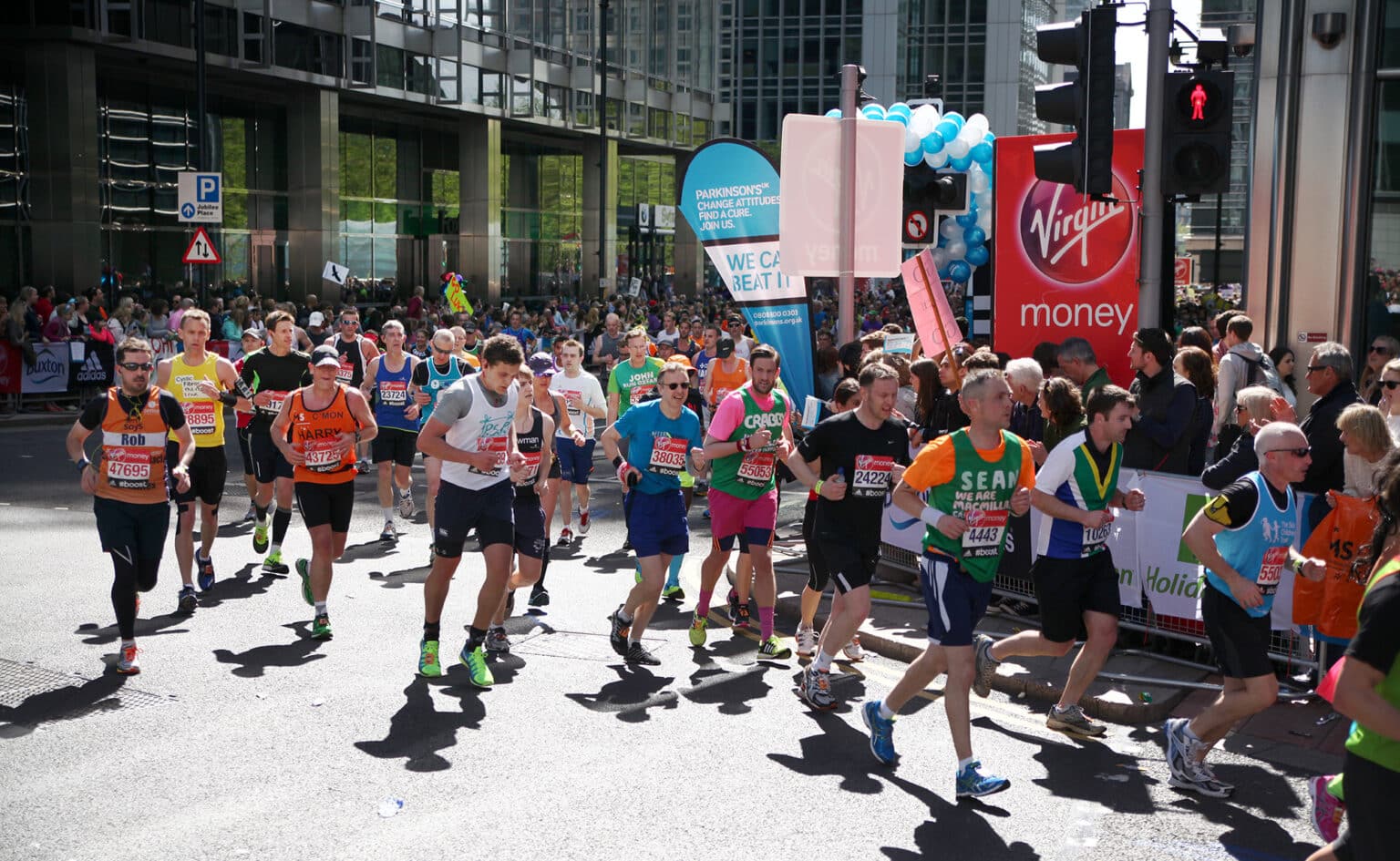
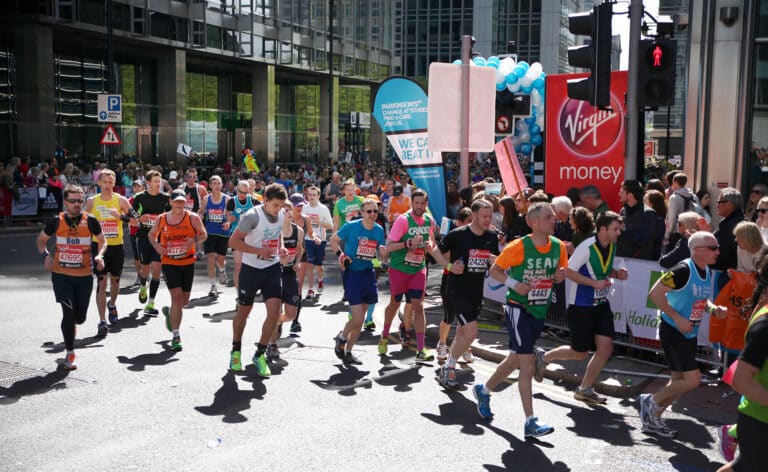
By Mike Gratton (London Marathon Winner 1983)

The marathon has become the glamour event of the sport of running – and despite all the sweat, blisters, and long slow, dull pain of fatigue, it is easy to see why.
It is a big personal challenge, and it has charity running written all over it; events like London are difficult to get a place, and London, particularly, is on the telly.
So, really, why wouldn’t the marathon be the biggest draw?
Well, to start with, it’s a very long distance. In times gone by, if you said I ran a marathon, some would ask, ‘How far was that then!’
Not any longer. We all now know what it is.
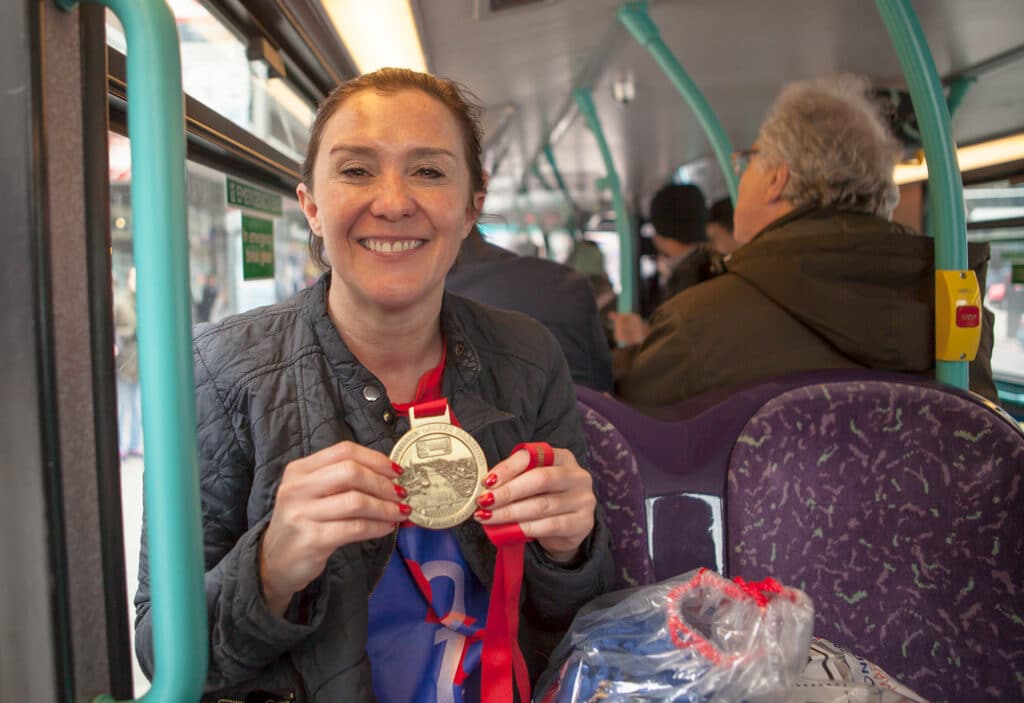
Originally, the marathon distance was 40km, that is, the distance carved on the stone at the start line in the town of Marathon near Athens, to the Penathanaic Stadium in the ancient centre of Athens.
Marathon is said to be where it all started 2,500+ years ago when Pheidippides ran to tell the Athenians of the victory at the Battle of Marathon. And apparently, he died of exhaustion after passing the message – although the story is that he actually ran a total of 150 miles in two days as he also ran to ask the Spartans for assistance and fought in the battle!
Early long-distance races were always called a marathon, and the term ended up covering arbitrary race distances of around 40 km. It was decided to standardise the distance, and they chose that it should be the distance of the upcoming 1908 London Olympic Marathon course.
The Olympic Marathon was planned to go from Windsor Castle to White City Stadium, where the games were held. To confuse things, the route was elongated to bring the start back from the Windsor Long Walk planned start to inside the castle walls so that the Royal children could watch it. The finish also had to be opposite the Royal box at White City.
The final distance was 26.2 miles – the very odd distance that is now ‘The Marathon’!
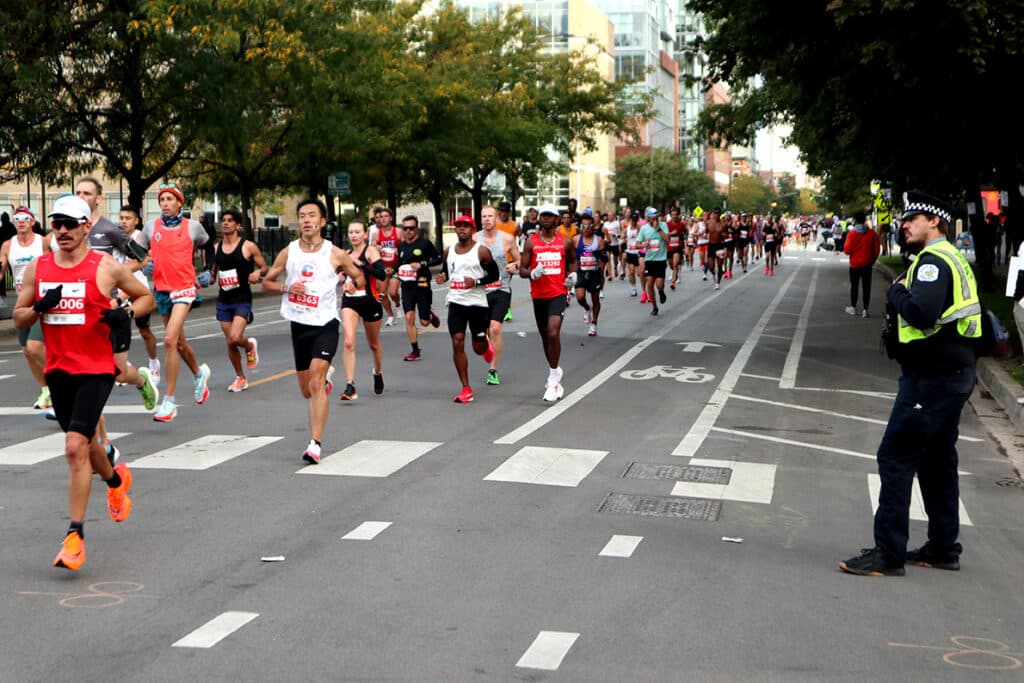
If 40km wasn’t hard enough, the extra ‘legacy’ distance set at London is an extra 2.2km. Don’t think of it being added to the start, which would be easy, but the 2.2km is added to the end…where it is particularly acutely felt.
The difficulty could be seen right back at the London Olympics in 1908 too. Dorando Pietri of Italy led the race until 40km before starting to slow drastically with dehydration. As he entered the stadium, in his delirium, he turned the wrong way to the finish. He corrected himself but fell from exhaustion several times before being helped across the line by stewards.
He was in first place, with American Johnny Hayes of the USA one minute behind as Pietri crossed the line. As Pietri had been aided, he was disqualified, and Hayes was awarded the gold medal. Later, in recognition of this Queen Alexandra gave Pietri a gold cup.
It’s a great story that also illustrates how ‘just out of normal human capabilities’ the marathon is. Pietri had won a 40km marathon in Carpi, Italy, in 2.38, a fast time for then, before the London Olympics. It was at 40km in London that Pietri started to suffer and slow, those extra 2.2km being his undoing.
And there, that is the difficulty of the marathon: how to overcome the fatigue that is caused by the human body only having enough of its preferred fuel, glycogen, for about 30km of moderate-paced running.
Clearly, hundreds of thousands of normal people finish a marathon every year – statistics show a very low percentage drop out of major marathons – so it is possible to condition yourself to make the distance.
When the marathon boom started, with the New York Marathon in the 1970s, only skinny endurance runners took part in marathons, their natural wiriness being ideal for running long distances, and races were pretty small.
But that was poised to change in 1981 with the first London Marathon.
That year, I participated in the England Athletics Championships, held on a hilly course in Rugby. I finished third in a personal best of 2hrs 16min. Although the first three of us ran fast times, there were only about 100 club runners in the race, and it attracted no attention.
Four weeks later, the first London Marathon took place – closing London down for the day as runners went from Blackheath (Greenwich Meridien) to Constitution Hill, next to Buckingham Palace. About 8,000 runners of all standards, shapes and sizes took part, and it was all over the press.
I went up from Kent to watch it and immediately thought,’ I want a bit of that next year’.
“This year 300,000+ applied for the 50,000 available places… that’s a lot of people”
And so did many others, as the race doubled in size in 1982, with around 16,000 runners and was again sold out in 1983. When chip timing came along, and the race could handle more runners, it started to rise to the current 50,000. London continues to be a sellout. This year 300,000+ applied for the 50,000 available places… that’s a lot of people in the UK who want to run a marathon.
For the record, I finished third in the 1982 London Marathon with 2hrs 12mins and then went on to win it in 1983 in 2hr 09mins.
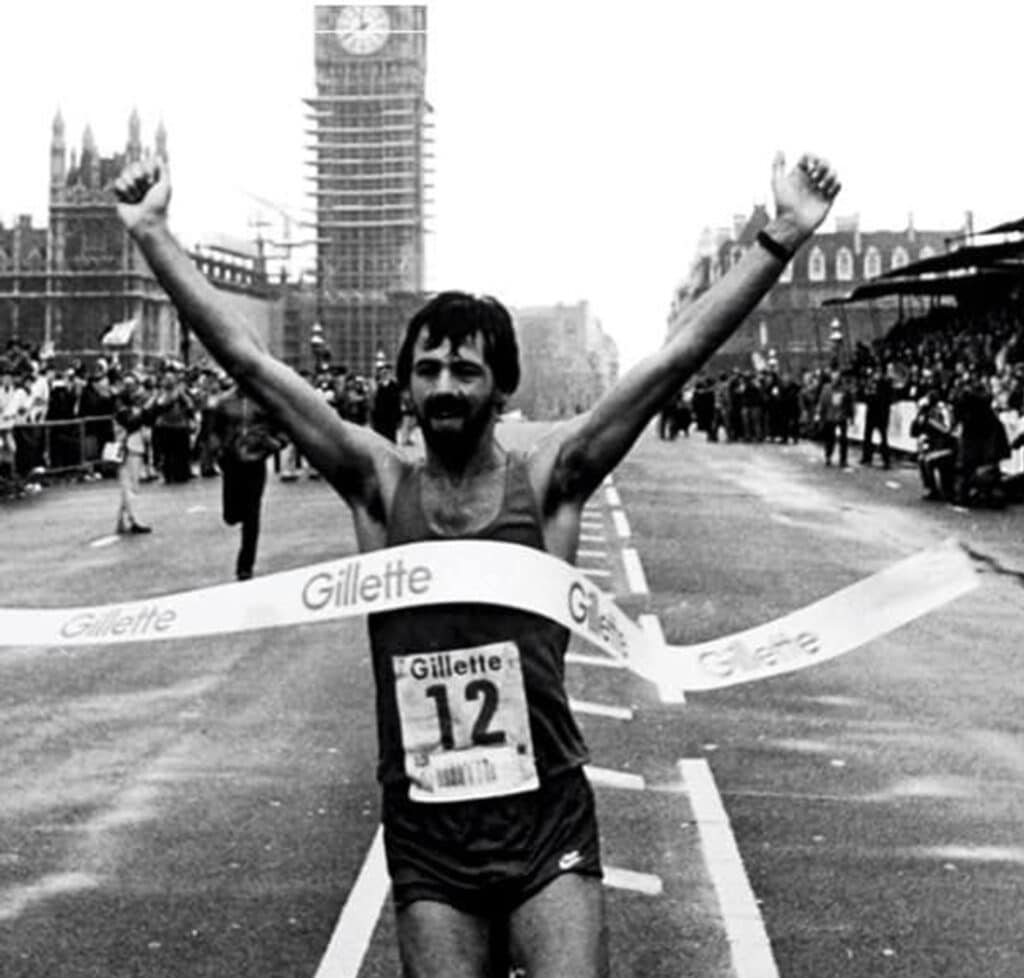
I was suitably inspired to make massive progress – raising standards was one of the stated aims of the London Marathon – and likewise, it became a massive community event that everyone wants to run – another aim of the founders of the London Marathon, Chris Brasher and John Disley.
Now we have the Abbott World Marathon Majors; six marathons in Tokyo, London, Boston, Berlin, Chicago and New York, with a seventh, Sydney, poised to join. All events with upwards of 55,000 participants. Added to this are a plethora of brilliant events hosted by cities in the UK (Manchester, Brighton, Chester, York, Edinburgh, Lochness etc) and many more around the world.
In the early years of the marathon, there was little concept of how to prepare well for a marathon. Many would enter the London Marathon in the Autumn and found out around Christmas that they got in. Most will not have run since school cross-country days, so typically, not much training will have been done until the ‘accepted’ letter came – leaving about 16 weeks to get ready from Zero.
That’s a tough task, zero to 42.2km in 4 months. Clearly, with the help of new training guides in the likes of Runner’s World Magazine (I was responsible for writing some of the RW programmes) and in the London Marathons ‘acceptance’ magazine, most people managed to get into some kind of shape and complete the marathon – going from walking briskly in the early sessions to running 42.2km in the race.
It’s amazing that the human physiology can be changed so much in such a short amount of time. Even so, it is not ideal, it’s just not possible to prepare optimally for the marathon in 4 months.
Get around, yes; run to your potential ability, not really.
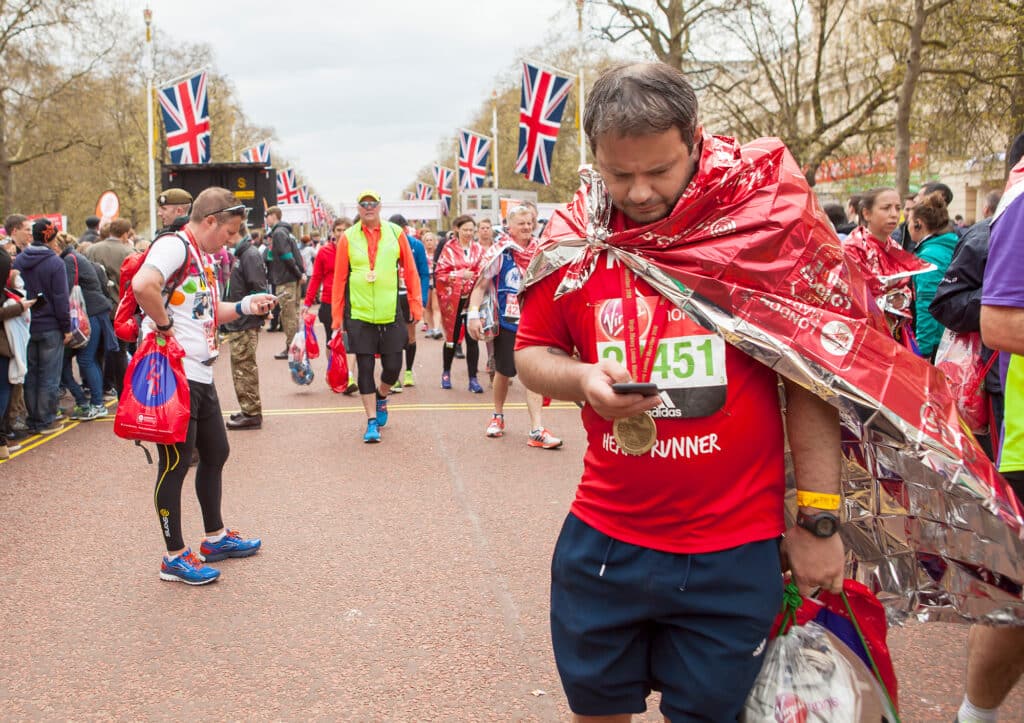
If zero to 26.2 is a task, then 5km to 42.2, surely, is also a similar task – it is still 37.1km further!
Well, yes, it is a lot further and the build-up in training volume, so that you can complete the distance to the best of your ability, will still be similar.
The advantage you have though, as a 5km runner, is, that, having completed the couch-to-5km programme you have learnt many things.
One of these, is a training habit. The second, is that you will become comfortable with continuous running. A great position to be in as a starting point for your next big challenge.
The overriding consideration of the marathon is: how to fuel such a long run with a finite amount of glycogen available.
The second consideration is how to condition yourself to accept the fatigue that is inevitable towards the end of the race.
The same things principally achieve both of these: building up long training runs and developing frequency in your weekly training.
The physiological changes that develop the energy systems, that fuel your marathon, as well as the robustness to cope with the pounding, and resulting fatigue, over the distance, do not come quickly.
As a 5km runner you will have developed an efficient running style and sufficient robustness to start to build up towards a bespoke marathon training programme. This is a good start, but you still need to build up very gradually to allow your body to adapt to the new demands.
There is a saying used by running coaches, that you initially train to be able to train better, then you train for the event.
In endurance terms, this means laying a base that you can build on.
Most changes happen over time. The training you do today will show up as marginal improvement in two weeks’ time. Your bodies adaptation to a training load will take something around 8 weeks, then you will start to feel the improvement.
You may think that the concept will be, ‘train hard and you will become fitter’. However, the body works on a system of overload (a hard training run) followed by rest, during which time the body repairs itself, overcoming the stress damage of the hard session. This, the repair, it does to a slightly better degree than before the hard session. Hence, with each cycle of hard, followed by recovery, you will see incremental improvement.
If you push yourself on every run, you will get progressively more tired and sorer, eventually causing breakdown, which may show eventually as an injury.
If you run quite fast, your cardio system can’t keep up with sufficient oxygen. You may be able to keep going for about 10 minutes before the production of lactate, which is the by-product of burning oxygen to create energy in the body, slows you down. This is anaerobic running.
You definitely don’t want that to happen in your marathon. What you need to be able to do is run at an intensity that makes it possible for the body to keep going, keeping up the supply of oxygen and glycogen over a long period of time. This is called aerobic running, and developing a big aerobic capacity will help enable you to keep going for a long time.
Aerobic capacity is also known as developing an aerobic base.
Your heart and lungs are responsible for pushing oxygen in the blood around the body and removing carbon dioxide, which you breathe out. Your heart is a muscle and running will help to develop that muscle so that more blood is sent around with each beat.
Once the blood reaches your limbs it requires a good network of vessels to help it reach the working muscles. These are tiny capillaries that are encouraged to grow in number as you regularly run your steady state runs.
Inside the muscle cells are tiny mitochondria, which are the little engines that use the oxygen, combined with glycogen, to create the energy that moves the muscles. The mitochondria are also recruited in greater numbers as you regularly run at a steady state.
So, the general principle is, that plenty of steady running will develop your cardiovascular system, the capillary network and a number of mitochondria. As you develop these your aerobic capacity also improves, allowing you to do more work at sub-maximum paces.
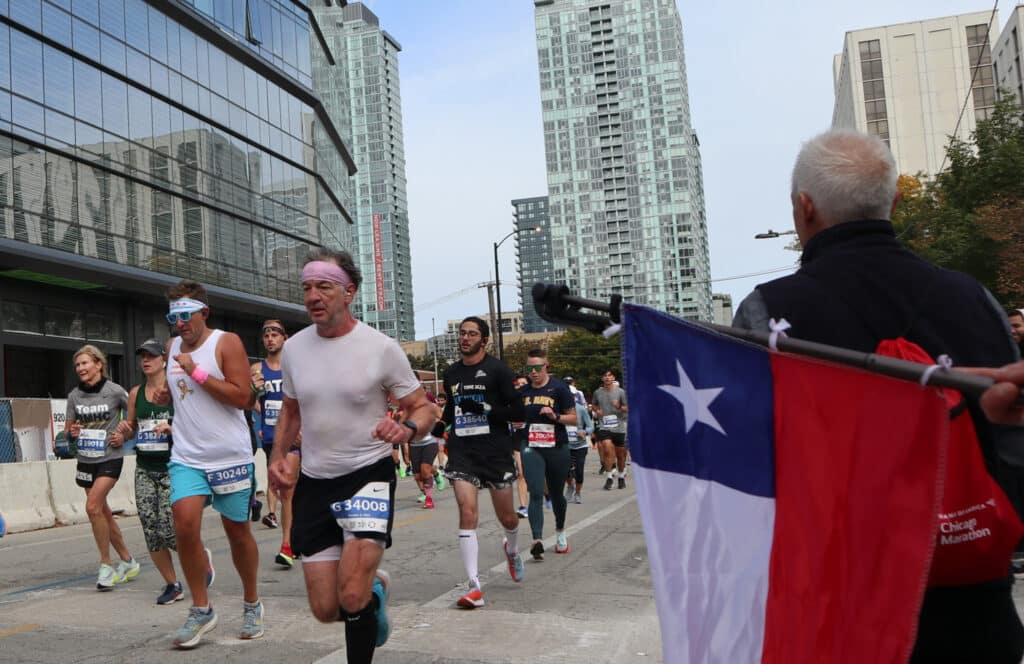
Yes, it is. In the early stages you are building both distance and the frequency of your runs – most of your runs, initially, should be on the slower side.
As your body adapts your pace will naturally improve as you become more aerobically efficient. And with the introduction of some running at marathon pace, as well as some at a faster pace (5km and 10km pace), later in the plan, you will get faster.
Many will have seen the statement, ’80:20’ training. This means that 80% of your training is slow to steady aerobic running, and 20% faster, or anaerobic running.
I would say, in reality, most new 5km runners with marathon aspirations, will initially be more likely to be ‘100’ percent steady pace aerobic running. This gradually lifting to ’90:10’, after the first aerobic base building period, with some speed work, which may be the Saturday parkrun.
Then, possibly, ’80:20’ in the last 8 weeks, as an increase in speed, or ‘coming to a peak’, is desired. When you might do some ‘interval training’. This is running short distances of up to 2mins duration, at a pace faster than your 5km pace, with a ‘recovery interval’, typically of about 60 to 90sec.

This comprehensive 24-week training plan is designed for runners transitioning from the Couch to 5k program to a full marathon. It offers an effective progression to help you achieve your goals, while optimising your performance and endurance.
It starts with 8 weeks of aerobic training, to establish an aerobic base, before moving in a gradual transition to more specific marathon pace training.
This will be the introduction of some harder training; hill running to develop leg strength and robustness, all-the-while continuing to build up the long run.
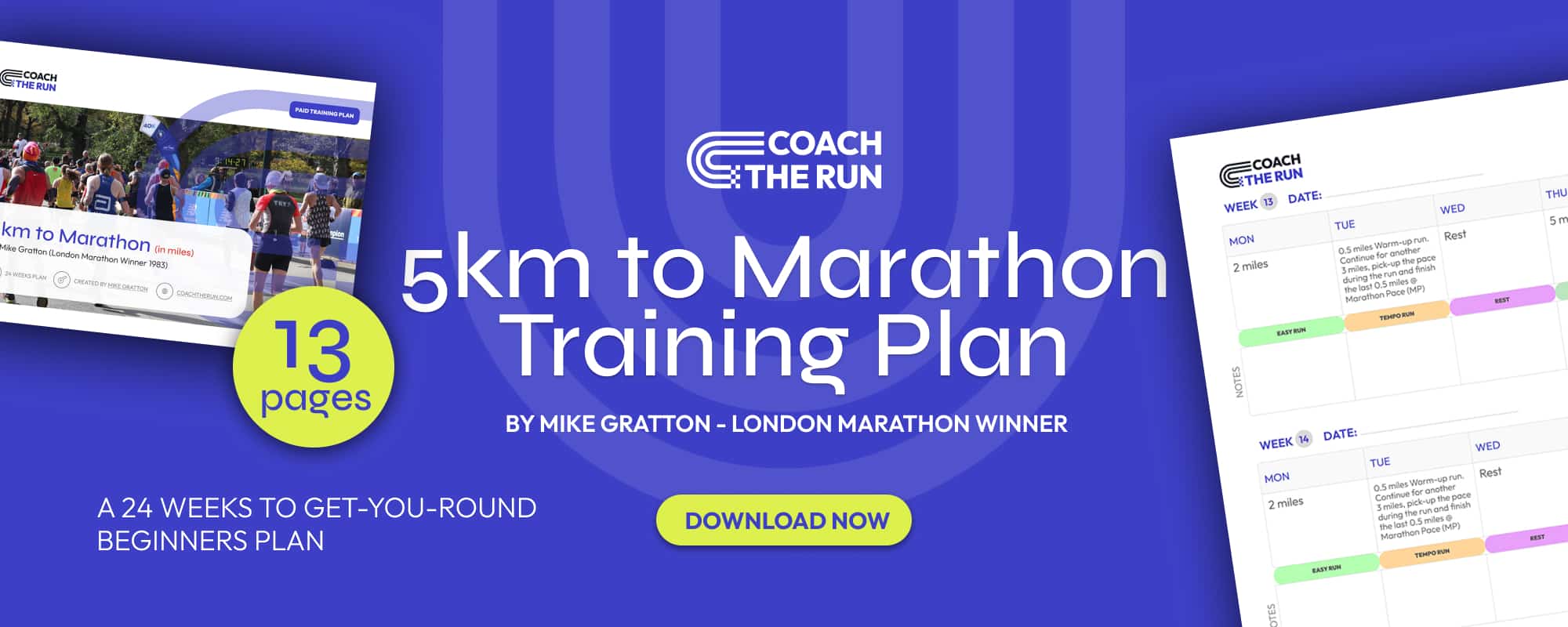
Then, finally, this is followed by 8 weeks when you introduce some faster training, particularly at your projected marathon pace, but some faster interval type running – and you will also aim at running your longest long run about 4 weeks out (usually of around 30km).
In the plan, we cover:
Our PDF training plan is an excellent tool for tracking your daily and weekly progress.
Display it proudly on your fridge for you, your family, and your friends to easily see your daily achievements together, working towards that big race day!
Share this article
Running is a fantastic way to improve your cardiovascular health, relieve stress, and build endurance....
As a long-distance runner, it is important to stay hydrated before, during, and after a...
“When aiming for marathon pace on a hilly course in Surrey, should I focus on...
Designed by our head coach, Mike Gratton, winner of the 1983 London Marathon, this 12-week...
When it comes to running, many people often ask: “How long does it take to...
We’re here to make sure you’re up-to-date with the latest running tips, events and product discounts – we’ve always got your back! Rest assured, we value your privacy and would never dream of selling your address.
BONUS: Sign up today and receive a FREE code for our Sub-4-Hour Marathon Plan